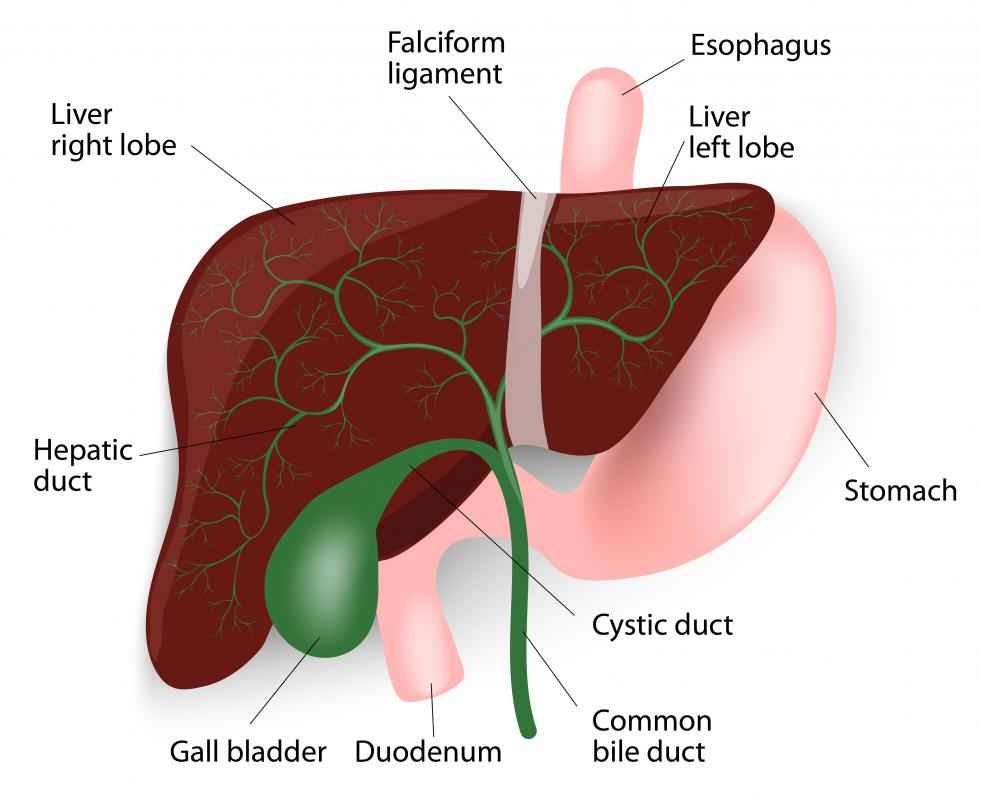At TheHealthBoard, we're committed to delivering accurate, trustworthy information. Our expert-authored content is rigorously fact-checked and sourced from credible authorities. Discover how we uphold the highest standards in providing you with reliable knowledge.
What is Columnar Epithelium?
Epithelium is the tissue that forms the surfaces and linings of the body, and columnar epithelium consists of one or more layers of closely packed columnar cells. Such cells can be recognized by their appearance, being taller than they are wide. Generally, this type of tissue can be found lining the intestines and the respiratory tract. It is also found inside glands, reproductive organs, and other places where the secretion and absorption of substances occurs.
Columnar epithelial cells resemble elongated boxes. They have oval nuclei that usually are situated in the lower part of the cell. The cells are closely joined together and rest on a basement membrane, known as the basal lamina.

Some cells have tiny hair-like structures known as cilia on their upper surfaces. These tiny fronds beat in unison to waft particles across the cell surface. Columnar cells with cilia can be found in the respiratory tracts. Other cells have minute finger-like projections called microvilli. These help to increase the surface area available for absorption and can be found lining the intestines.

In the digestive tract, this type of tissue is arranged to form a series of finger-like projections, called villi, that increase the surface area. It contains specialized goblet cells — tiny glands that each contain a reservoir of mucus. As well as being found in the intestines, they exist in respiratory passages. The mucus they secrete acts as a lubricant and a protective layer.

This type of epithelium can be arranged in a number of ways. When the cells are unilayered, it is known as simple columnar epithelium. The cells are arranged in a row on the basement membrane with their nuclei in alignment. Usually, the single layer is delicate and restricted to areas of the body without too much wear and tear. Simple tissue lines the digestive tract, glands such as the gall bladder, and parts of the reproductive organs.
Less commonly, multi-layered columnar cells can be found, which is known as stratified columnar epithelium. This tissue may be found within the mammary glands and salivary glands.
Some tissue appears to have more than one layer, but when examined closely, it has only one row of cells, all attached to the same basement membrane. The confusion arises because the layer of cells is folded or curvy and the cell nuclei are all at different heights. This is known as pseudostratified columnar epithelium and it often contains both cilia and goblet cells. The upper branches of the respiratory tract and parts of the male reproductive organs contain this type.
AS FEATURED ON:
AS FEATURED ON:













Discussion Comments
@DylanB – Your intestines need mucus for a couple of reasons. The inner lining needs protection, and the mucus offers this. Also, the mucus helps the stool slide through easily.
I know it seems a little strange, because we are used to thinking of mucus being only in our respiratory tract. It can be very useful in other areas of the body that need lubrication, too.
I'm not sure I understand the function of columnar epithelium in the intestines. I know they work to produce mucus, but why would you need mucus in your intestines?
I remember seeing photos of columnar epithelium cells in tissue in my biology book. I do recall that the cells were lean and tall and did not look like other more rounded cells that I had seen.
It was easy to remember the name, because these cells looked like columns. I didn't recall their function until reading this article, though.
Post your comments